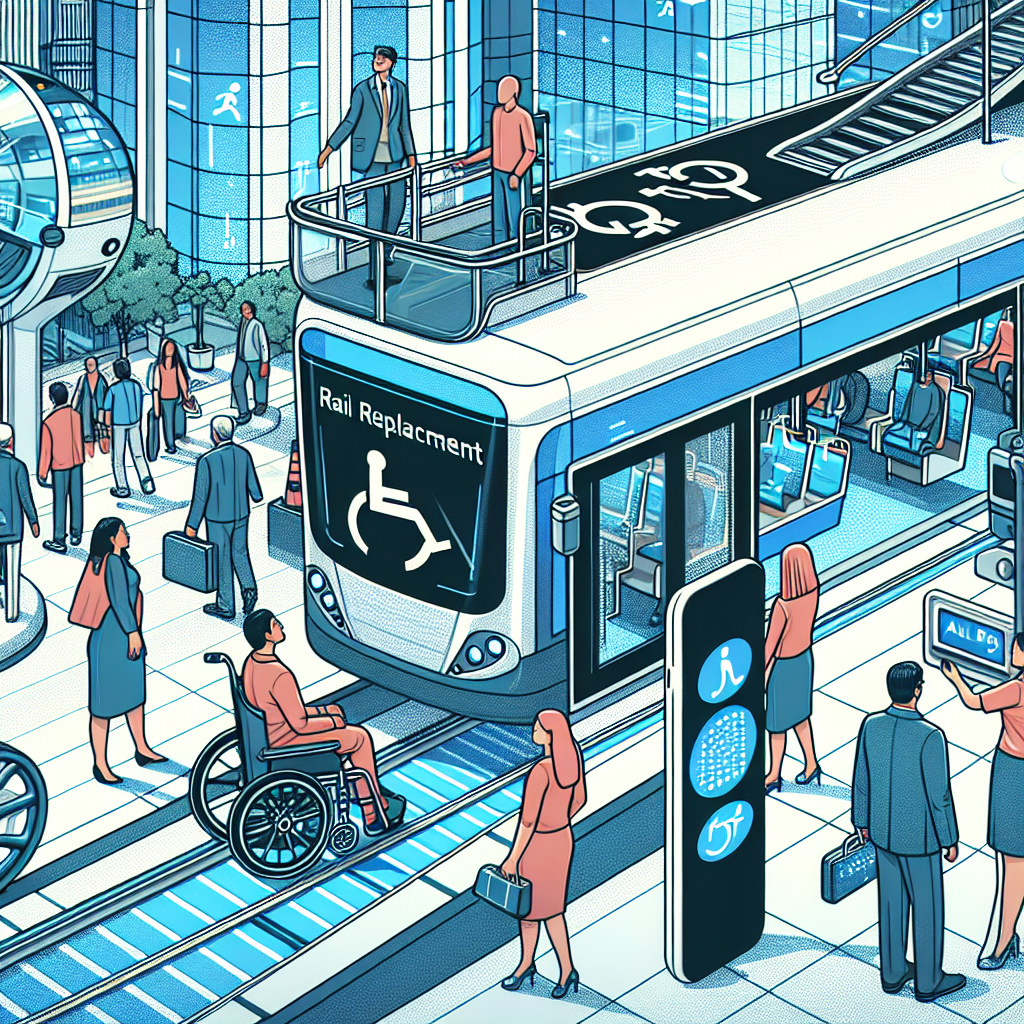Driving Accessibility in Rail Replacement Travel: A New Era of Passenger Support
Passengers across the UK can expect a more inclusive and accessible travel experience when navigating rail replacement services, thanks to a new initiative funded by the Department for Transport (DfT). Four pioneering projects have been awarded a share of £800,000 to reimagine how passengers with accessibility needs receive information during disruptions to rail services.
Why Accessibility Matters in Rail Replacement Travel
Rail replacement services are a necessary aspect of ongoing rail maintenance and development. However, these temporary travel solutions often present challenges for passengers with disabilities or accessibility requirements. Navigating unfamiliar coach stations, understanding schedule changes, and accessing real-time updates can be overwhelming without clear and inclusive communication.
This investment signifies a turning point in how the rail industry approaches accessibility, focusing on making information delivery more inclusive, consistent, and adaptive for all travelers.
Meet the Four Winning Projects
The competition, delivered through the DfT’s Transport Research and Innovation Grant (TRIG) programme in collaboration with Connected Places Catapult, targeted tech-driven solutions to the specific gap in accessible passenger information during rail replacement scenarios. Here are the four forward-thinking initiatives chosen to take the industry forward:
1. Altrodynamics Limited – Real-Time Support System for Passengers
Altrodynamics aims to create a user-friendly platform for real-time communication between service operators and passengers. Their system focuses on alerting passengers with disabilities to changes in services and providing detailed accessibility information before and during their travel experience.
2. Enable Accessible Travel – Digital Inclusion Through Innovation
Enable Accessible Travel is developing a cutting-edge digital assistant that integrates route planning, journey assistance, and personalized updates. The aim is to empower passengers with disabilities by providing them with tailor-made travel information, ensuring informed and stress-free journeys.
3. Placr Limited – Unified Information Platform
Placr will test a centralized data platform that consolidates various information sources to streamline updates regarding rail replacement services. With a particular focus on accessibility, the system will aim to deliver real-time, accurate, and personalized information to passengers before and during travel disruptions.
4. Transreport Limited – Enhancing Passenger Assistance App
Transreport, already known for its Passenger Assistance app, plans to expand its services to cover rail replacement scenarios. Their enhancements will help users identify accessible coaches, get live journey updates, and request real-time assistance – all through a single, easy-to-navigate interface.
The Role of the Department for Transport and Connected Places Catapult
This initiative falls under the DfT’s broader strategy to make public transport more inclusive and accessible. By teaming up with Connected Places Catapult—a UK government-backed innovation agency—the department ensures cutting-edge research and development is applied to challenges facing real passengers every day.
The TRIG: Accessibility programme, under which this funding was delivered, explicitly targets technology that enhances travel accessibility. This competition aligns closely with the government’s Transport Accessibility Strategy, which envisions a network where disabled passengers can access the same services, information, and support as everyone else.
How This Will Impact Passengers and Rail Operators
For passengers, especially those with physical, cognitive, or sensory impairments, this initiative brings hope for a smoother, more predictable journey during temporary service interruptions. Better access to real-time updates, travel routes, coach locations, and available assistance enables greater independence and confidence when traveling.
For rail operators, these tools provide improved communication channels between services and passengers, potentially reducing complaints and delays. Additionally, fulfilling accessibility requirements through such innovations supports both legal obligations and a genuine commitment to inclusivity.
Looking Ahead: The Future of Rail Accessibility
As these four projects move from concept to deployment, their real-world application will pave the way for scalable, system-wide improvements across the UK transport network. They reflect an evolving attitude in public infrastructure—one that puts the needs of all passengers at the forefront.
The £800,000 investment is more than just a financial injection; it’s a catalyst for change, fostering a transport system that is inclusive by design and resilient in the face of disruption.
Conclusion: Technology as a Tool for Equity
These new projects serve as a reminder that technology, when guided by empathy and inclusivity, can transform experiences and remove long-standing barriers in public transport. As stakeholders—from innovators to policymakers—come together, the future of rail travel promises a more connected, informed, and accessible journey for everyone.
Stay tuned over the coming months as these projects evolve and begin their live trials. The age of accessible rail replacement travel isn’t just arriving—it’s already boarding.



Leave a Reply